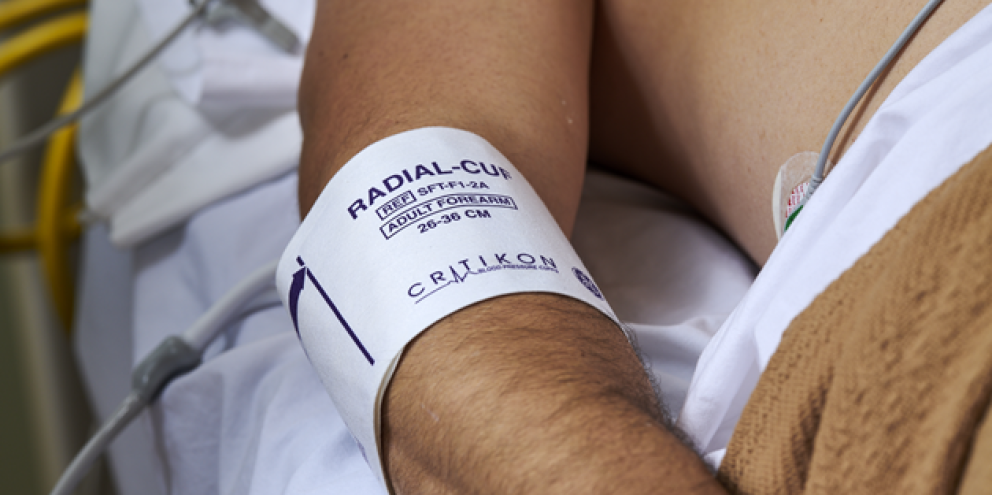Bruce Friedman, D.Eng.
Mean arterial pressure (MAP) is an important physiologic variable. MAP can be used to calculate overall blood flow, and is a good indicator of perfusion pressure. It is an important therapeutic target in several disease states, including sepsis and head trauma.1 Unfortunately, there is sometimes confusion among different methods used to determine a patient’s MAP.
Intra-arterial MAP
MAP is defined as the geometric mean of the pressure over a pulse. As illustrated below, MAP is the pressure at which the pulse is divided into two sections of equal area.

Monitors that measure intra-arterial pressure report a value of MAP that is averaged over several pulse beats.
Oscillometric MAP
All DINAMAP™ algorithms determine MAP from the oscillometric envelope, which refers to the pulsations collected during a determination. It is the largest amplitude pulsation recorded during the determination. This measurement is based on knowledge of the behavior of the artery under an inflated cuff and is used by all manufacturers of oscillometric device. SBP and DBP are then determined from MAP and the envelope.
DINAMAP measurements are validated against an intra-arterial reference.
An independent study of three oscillometric devices, demonstrated that all three accurately measured MAP when compared to an intra-arterial reference.2
Calculated MAP
MAP is often calculated from a formula that is often known as the “2/3rds rule”, which is shown below:

It was developed to allow calculation of an estimate of MAP from manual auscultatory determinations. This formula is an approximation of MAP which is based on assumptions about the shape of the BP pulse. Individual changes in the pulse shape affect the accuracy of that formula.
Several references clarify the problem with using this formula for MAP. In one study, the authors found that the current formula underestimates MAP determined using tonometry at the brachial artery as the reference.3 They proposed an alternate formula, but since they were not comparing to an intra-arterial reference, there are still errors.
Another study found that both gender and the arterial site (brachial, radial, carotid) affected the accuracy of the approximation based on this calculation4.
The narrow pulse shapes in neonates compounds the problem with the formula and introduces significant errors5.
Conclusion
The most accurate value of MAP is obtained from intra-arterial measurements.
The oscillometric MAP, as measured by the DINAMAP, is validated to intra-arterial pressure.
The popular 2/3rd rule is an approximation that can be fairly accurate in some patients, but is affected by pulse shape, measurement site and patient gender. Clinicians should use caution when comparing MAP determined from this rule to the MAP measured from oscillometric devices.
References
- Magder, Sheldon A. “The highs and lows of blood pressure: toward meaningful clinical targets in patients with shock.” Critical care medicine 42.5 (2014): 1241-1251.
- Muecke, Sandy, Andrew Bersten, and John Plummer. “The mean machine; accurate non-invasive blood pressure measurement in the critically Ill patient.” Journal of clinical monitoring and computing 23.5 (2009): 283-297.
- Verrij, Elisabeth A., Hieronymus H. Vincent, and Willem JW Bos. “Rule of thumb to calculate mean arterial pressure at the brachial artery level.” Journal of hypertension 26.5 (2008): 1043-1045.
- Mahieu, Dries, et al. “Validity of the one-third rule to calculate mean arterial pressure.” Artery Research 1.2 (2007): 71.
- Gevers, M., et al. “Calculated mean arterial blood pressure in critically ill neonates.” Basic research in cardiology 88.1 (1993): 80-85.









